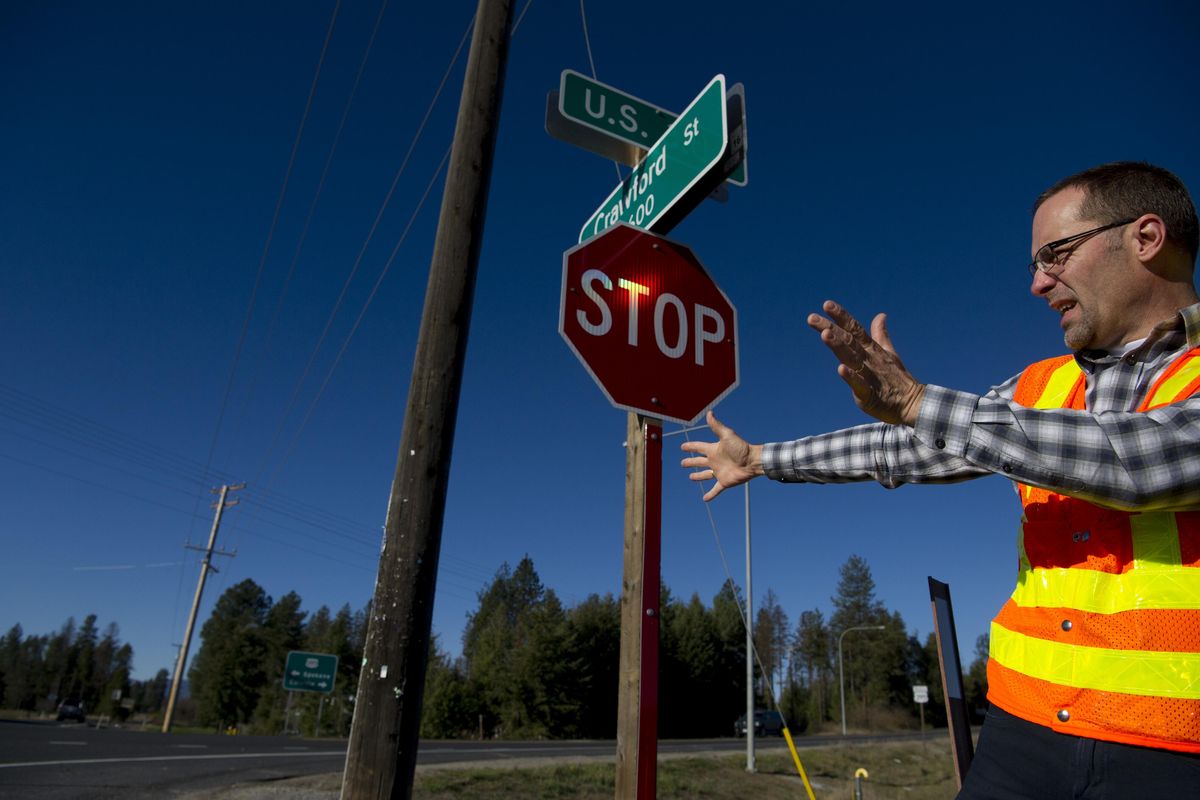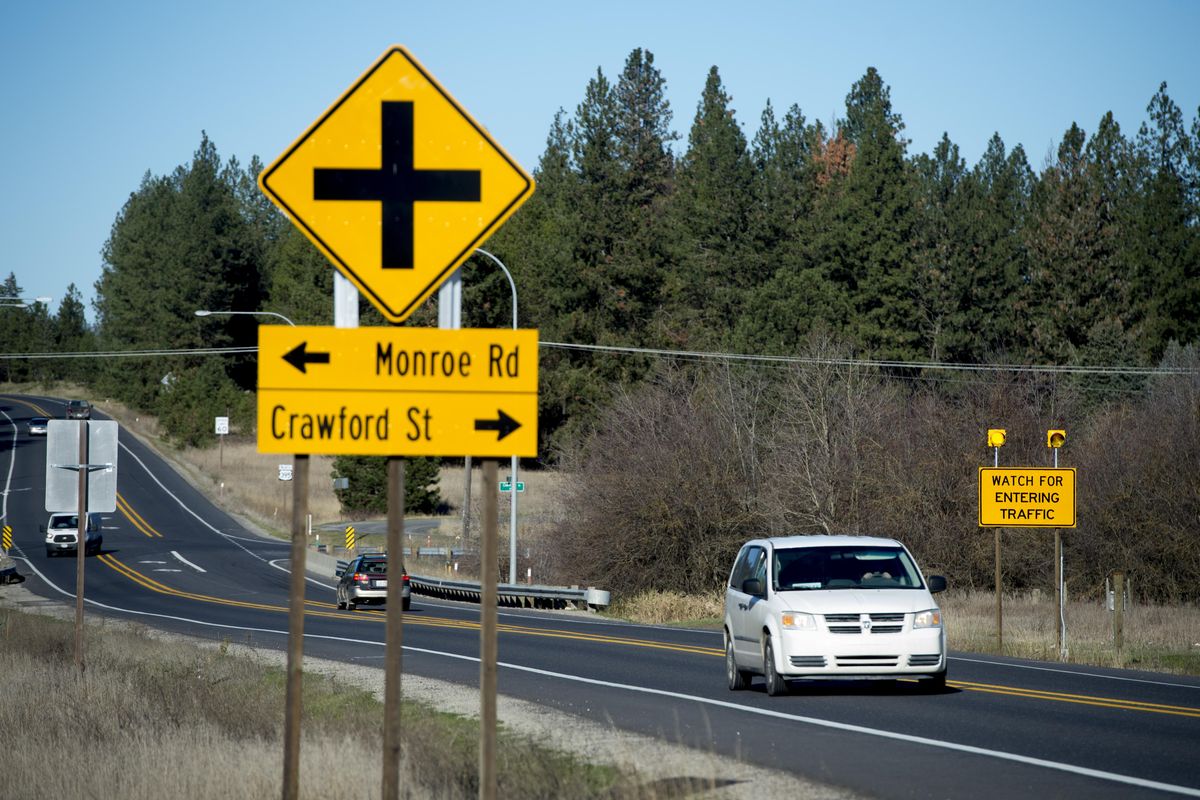New signs at dangerous intersections warn motorists of cross traffic on Highways 2 and 395
Glenn Wagemann a Traffic Engineer for WSDOT describes how pressure plates embedded in the road activate warning lights for oncoming traffic at the northeast corner of Hwy. 395 and Crawford Road on November 8, 2016, near Deer Park, Wash. TYLER TJOMSLAND tylert@spokesman.com (Tyler Tjomsland / The Spokesman-Review)Buy a print of this photo
Three new warning signs with yellow flashing lights are now operating on north Spokane County highways to improve safety.
The signs, along with wider lane markers and reflectors, were installed in recent weeks to reduce the numbers of dangerous collisions at three busy intersections.
The intersections involved are on U.S. Highway 395 at Burroughs Road and at Crawford Street.
The third sign with flashers has been installed on U.S. Highway 2 at Colbert Road.
From 2010 through 2014, the stretch from Burroughs Road to Crawford has seen 65 accidents, including two fatalities.
Two-thirds of those crashes involved vehicles entering the highway from the sides and being struck at an angle, according to Glenn Wagemann, regional traffic engineer for the state Department of Transportation. Angle collisions can be more severe, he said.
At Colbert Road, there were 19 crashes during the same five years, including two involving serious injuries.
The signs and flashing lights warn oncoming drivers on the highway of the possibility that another driver might pull out from the side. The signs have pavement sensors and can detect when a driver is stopped and waiting to enter or cross the highway from side roads.
Also, the state changed striping at the intersections to better control crossings and turns.
The cost of the signs was $100,000.
The new signs at Deer Park were installed even though the state plans to reconfigure traffic with roundabouts in 2018.
Wagemann said residents of the area argued for lowering the speed limit rather than putting in roundabouts at the intersection of the highway at Crawford and Monroe Road and the intersection of the highway at Main and Short Road.
The roundabouts are considered more effective at stopping dangerous crashes because they virtually eliminate angle collisions.
If the speed limit were lowered to 45 mph, there would still be some drivers going through that stretch at higher speeds, Wagemann said.
He said the roundabouts might increase travel time through that stretch of highway by 50 seconds.
Once the roundabouts are built, then the signs and flashers can be moved to other locations, he said.

